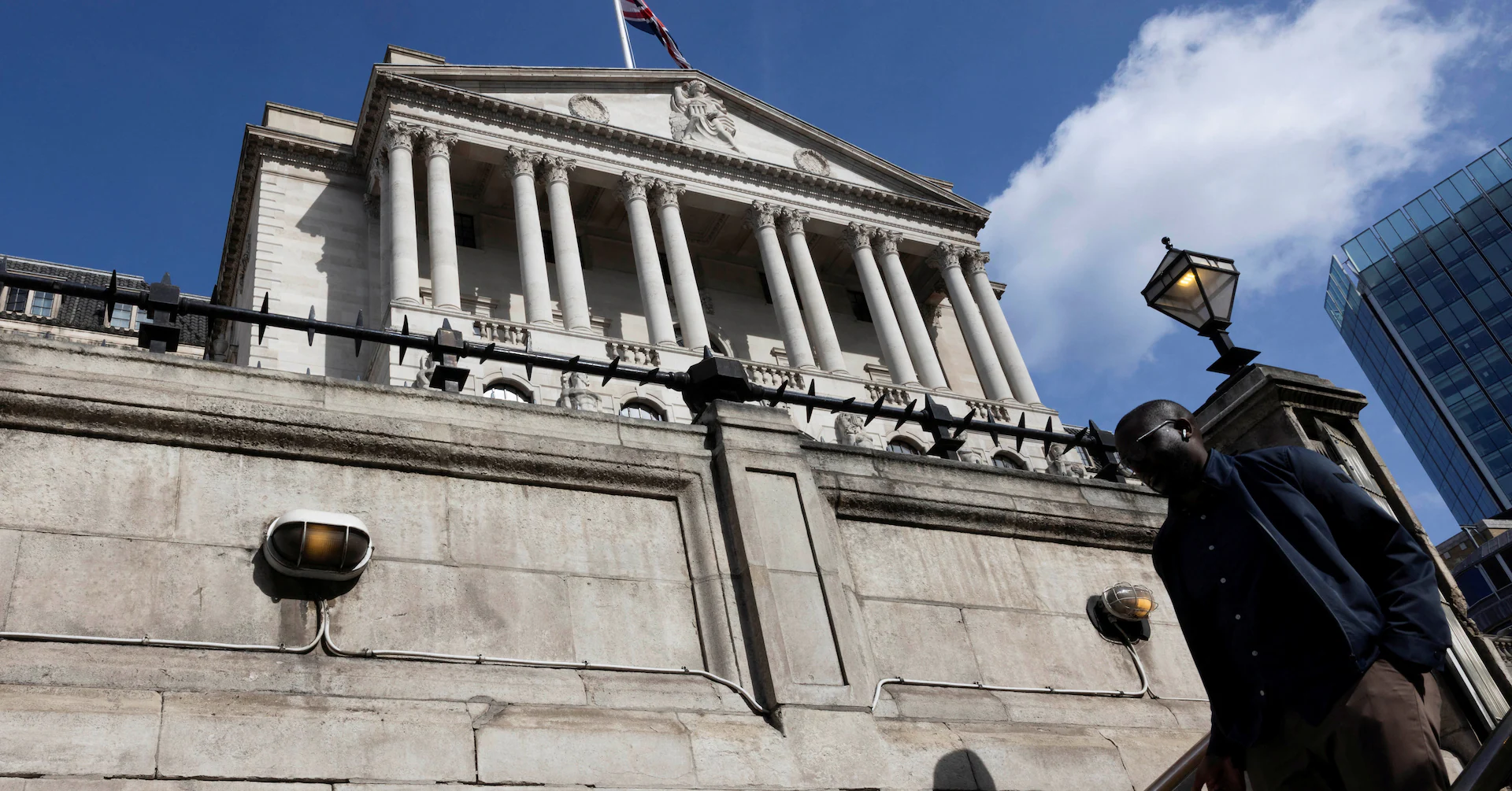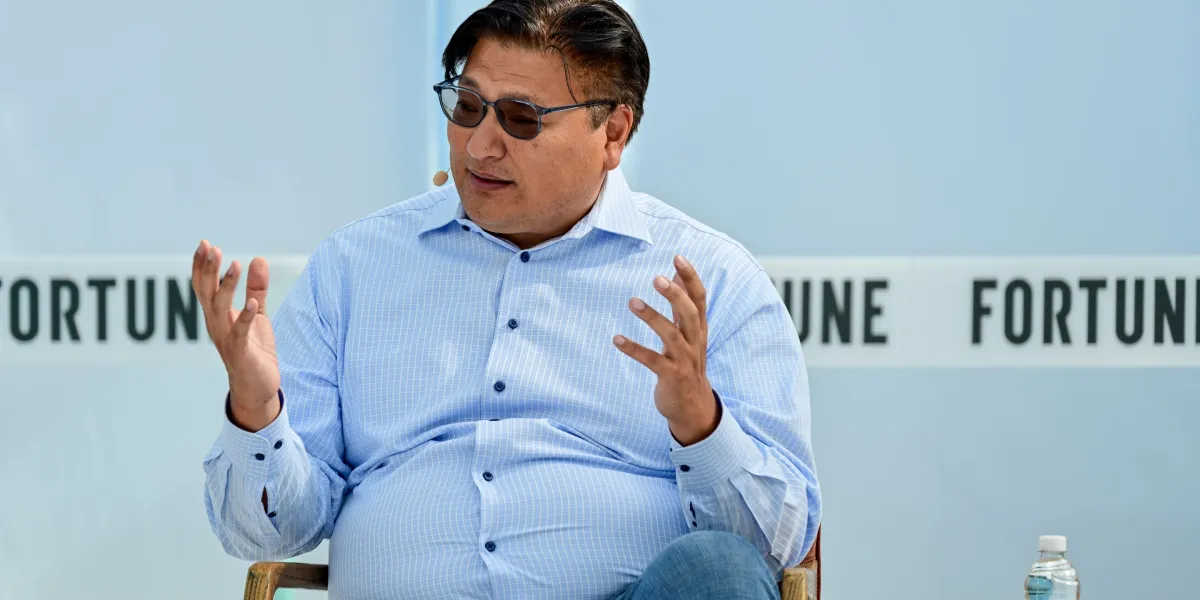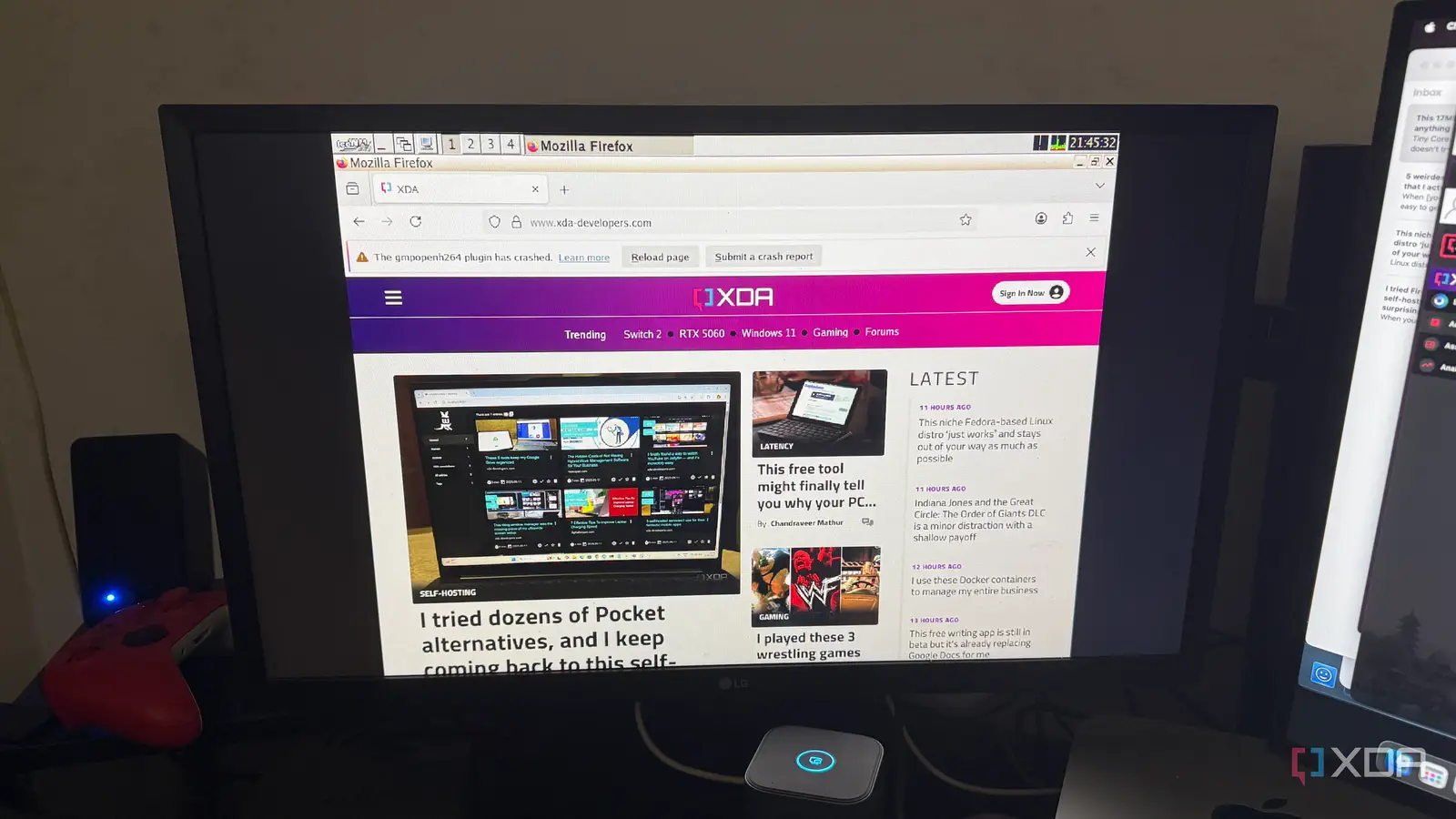
LONDON, Sept 18 (Reuters) – The Bank of England left rates unchanged on Thursday and said it was slowing the pace of its quantitative tightening programme and skewing sales away from long-dated gilts to minimise the impact on turbulent bond markets.
Policymakers voted 7-2 to slow the annual pace at which it unloads the gilts that it purchased from 2009 and 2021 to 70 billion pounds from 100 billion pounds ($136.47 billion), broadly in line with a Reuters poll median forecast a decline to 67.5 billion.
Sign up here.
Sterling turned slightly negative on the day in steady trading and was last at $1.3625 . The euro edged up to 86.83 pence .
COMMENTS:
MICHAEL METCALFE, HEAD OF MACRO STRATEGY, STATE STREET MARKETS, LONDON:
“In contrast to the Fed, UK inflation is high enough to prevent the BoE going for further insurance cuts. And even with gilts under pressure, they chose to only modestly reduce the pace of quantitative tightening, with only a small nod to selling fewer of their longer dated holdings.
“Altogether a robust assertion of central independence and their inflation focus. With online inflation still accelerating in September, this stance doesn’t look set to change anytime soon.”
MICHAEL FIELD, CHIEF EUROPEAN MARKET STRATEGIST, MORNINGSTAR:
“Central banks are always balancing two forces: inflation and the health of the economy. Last month the decision was harder, but with the latest data showing inflation sticky, at close to 4%, this decision was easier to make.
“Economic growth is still weak in the UK, but inflation is now close to double the bank’s targeted level. Economists believe this is transitory, but cutting rates at this stage would clearly not help inflation in getting back to normalised levels.”
JAMES ROSSITER, HEAD OF GLOBAL MACRO STRATEGY, TD SECURITIES, LONDON:
“We expect another 25 bps interest rate cut in November. The decision to slow the annual pace at which it unloads the gilts purchased from 2009 and 2021 to 70 billion pounds from 100 billion pounds did not surprise us, as there was fairly broad consensus around that figure. The Bank of England has proved to be conservative in its statement, despite speculations that it might change its wording.”
LALE AKONER, GLOBAL MARKET ANALYST AT ETORO, LONDON:
“The Bank of England has decided to keep rates unchanged, highlighting the challenge of weak jobs data and stubborn inflation pressures. Cutting too soon could lead to higher inflation expectations, while holding too long risks slowing growth further.
“For everyday investors, this means savings rates are likely to stay steady for now, but mortgages remain expensive with little relief in sight. Government bond yields may stay high and the pound supported as markets scale back bets on rate cuts. In stocks, defensive sectors like consumer staples and utilities could offer stability against sticky inflation and weaker wage growth.”
KIRSTINE KUNDBY-NIELSEN, FX ANALYST, DANSKE BANK, COPENHAGEN
“It was fairly in line with expectations, both the decision and the 7-2 vote split.
“There was an absence of hawkishness. They’re not closing the door to a November cut, for example, and keeping this careful and gradual approach to easing.
“We expect cuts in November and then in February and then on hold from there. The disinflationary process is ongoing, the labour market will continue to weaken and growth will remain subdued. That is going to push them to keep cutting, just a bit more.
“With the ECB on hold and the euro area economy faring fairly well, that will push euro-sterling higher.”
STEVE CALYTON, HEAD OF EQUITY FUNDS, HARGREAVES LANSDOWN:
“Markets were pricing in a 98% likelihood that rates would stay at 4.0%, because so far, we are not seeing enough progress in bringing inflation down to give room for manoeuvre on rates. Service prices remain far above the overall 2% target and goods price inflation edged up toward 3% last month. The Bank will be watching employment and growth data closely for now, because it will worry about choking off growth if interest rates stay too high for too long, but for now, its hands look tied.”
MARION AMIOT, CHIEF UK ECONOMIST AT S&P GLOBAL RATINGS, LONDON:
“As expected, the BoE has not cut rates, and it is unlikely it will ease monetary policy again this year.
“It’s increasingly clear that firms have been adjusting to the increase in labour costs – driven by the minimum wage increase and higher NIECs, by shedding job as margins are squeezed and productivity has not kept up. Robust wage growth highlights that this is translating into a higher structural unemployment rate and pointing to the risks of higher inflation becoming more entrenched as soon as economic activity accelerates.”
LLOYD HARRIS, HEAD OF FIXED INCOME, PREMIER MITON INVESTORS, LONDON:
“With five rate cuts already behind us, the Bank of England’s decision to hold today was no surprise. Inflation remains stubborn at 3.8%, and wage growth at 4.7% keeps the pressure on. The UK is now the most stagflationary economy in the developed world. A brutal mix of high inflation, weak growth, and rising unemployment.
“This is the kind of environment where central bankers earn their stripes. But they can’t do it alone. Government policy is currently amplifying stagflation, not fighting it. Rising employer costs and tax hikes are feeding inflationary pressures and contributing to a slower economy.
“The next big moment for the BoE and for all sterling markets is the Autumn Budget. If tax rises continue, which we expect, our fear is we’ll get more of the same for the BoE to manage.”
($1 = 0.7328 pounds)
Reporting by the Reuters Markets Team; Compiled by Dhara Ranasinghe; Editing by Amanda Cooper



